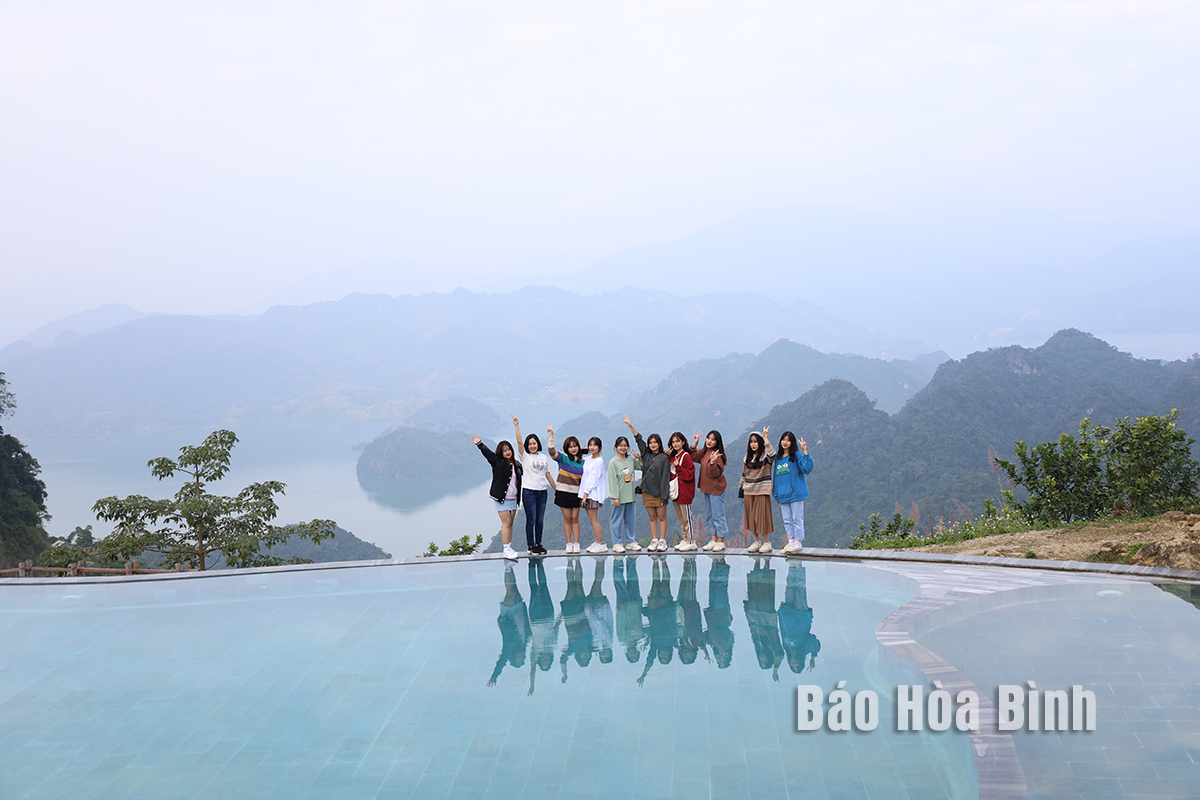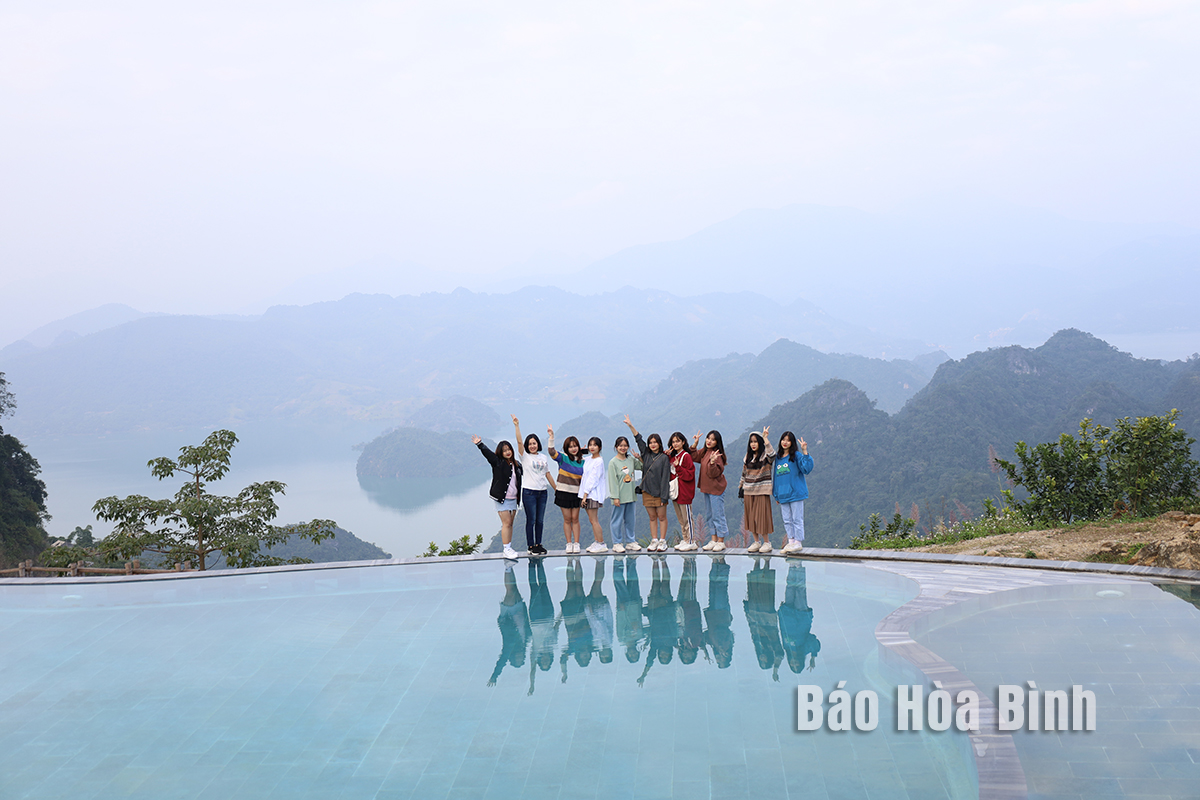



Tourists check-in amidst the breathtaking scenery of Hoa Binh Lake in Son Thuy commune (Mai Chau).
Travelling within the tourism site is now shortened and becomes more convenient thanks to the upgrading of roads leading to wharves. There are two main wharves in the locality, namely Bich Ha Wharf in Hoa Binh city and Thung Nai Wharf in Cao Phong district. The tourism site boasts over 300 boats for passenger transportation, a system of restaurants, recreational spots and tourist attractions. Tour routes are set up to connect with locations in the province and other localities, creating a diverse tourism ecosystem.
Visitors to the tourism site not only enjoy the cool and fresh air but also indulge in beautiful landscapes with undulating mountain ranges and hundreds of islands dotted across the azure waters. They also have the opportunity to admire the lively lake region with peaceful villages, boats gliding up and down, and hundreds of fish cages providing sustainable livelihoods for the locals.
The tourism site features long-standing famous destinations such as Ngoc Hoa Bay in Tan Lac district, the spiritual tourism spot of Chua Thac Bo Temple in Cao Phong district, and the Coconut island ecological tourism area in Da Bac district.
Tran Thi Tam Giang from Hanoi’s Ha Dong district said that every spring, she comes to Chua Thac Bo Temple to pray for good health and peace and enjoy the beauty of Hoa Binh Lake. This year, she had the opportunity to visit the tourism site twice. She joined a get-together at Maida Lodge Resort in Tien Phong commune, Da Bac district. Giang said she and her friends had wonderful memories, adding that next summer she plans to bring her family there to experience the fascinating destinations around the lake.
The Hoa Binh Lake tourism site spans Hoa Binh city and the districts of Da Bac, Cao Phong, Tan Lac, and Mai Chau, offering numerous beautiful ecological tourism areas and resorts with various amenities such as Mai Chau Hideaway, Ba Khan Village Resort in Son Thuy commune (Mai Chau), Xoan Retreat, Vayang, and Maida Lodge (Da Bac). These are ideal stopovers and top choices for domestic and international tourists who want to explore Hoa Binh. Each destination features unique architecture, close to nature and local culture, and scenic views overlooking the lake, showcasing unique natural landscapes that captivate the eye.
During their holiday, tourists can experience high-quality accommodation services and participate in sports activities on the lake or cycling while admiring the scenery. They also enjoy local cuisine with freshwater shrimp and fish caught in the lake.
Community-based tourism villages are popular destinations for many tourists who want to explore the diverse indigenous culture and pristine mountainous landscapes. Currently, there are eight villages in the locality, with seven belonging to the Muong ethnic group and the rest of the Dao ethnic group. With innovative mindset, households specialising in providing tourism services and local residents are striving to develop attractive tourism products along with the preservation of traditional culture to keep tourists stay longer.
According to Bui Xuan Truong, Deputy Director of the provincial Department of Culture, Sports, and Tourism, the Hoa Binh Lake tourism site offers diverse tour routes and programmes, such as the community-based tourism programme on Hoa Binh city - Da Bac district, Cao Phong district - Tan Lac district, Hoa Binh city - Da Bac district - Mai Chau district.
The infrastructure and technical facilities within the site are being improved, along with a roadmap of turning Hoa Binh Lake tourism site into a national tourism site. Many large-scale eco-tourism and resort projects are expected to be put into operation in the coming time, meeting the demands for tourism, leisure, and entertainment services, he said, adding that the number of visitors to the tourism site are anticipated to continue to rise.